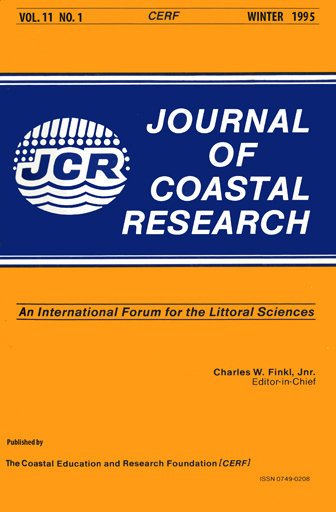Marine Flooding on the Coast of Kaua'i during Hurricane Iniki: Hindcasting Inundation Components and Delineating Washover
Keywords:
Hurricane Iniki, Hawai'i, Kaua'i, coastal overwash, FEMA V-zone, FIRM, debris line, hindcast analysisAbstract
The right frontal quadrant of Hurricane Iniki crossed the southeast coast of Kaua'i on the afternoon of September 11, 1992 and produced marine overwash with excursion distances of approximately 20-250 m and elevations in the range 4-9 m (mllw). Using a combination of field data, empirical relationships, and theory, we estimate that the effective maximum sustained wind velocity (Vθmax) was in the range 52.4 ± 2 m/s. We also analyze the meteorological and oceanographic components of marine flooding under the right frontal quadrant of the storm. Overwash was principally a function of eye-relative position and orientation of the coast, tan θ (slope), the friction-controlled wave run-up, and the wave set-up. Maximum overwash was adjacent to a major bathymetric channel and a slightly embayed coastline which reduced wave-energy dissipation in the nearshore, affording greater landward translation of deep-water wave characteristics. Total combined calculated overwash on the south shore of Kaua'i at Kukuiula (-5.2 m mllw) is the sum of pressure set-up (0.39 m), wave set-up (l m), wind stress set-up (0.06 m), run-up (2.9 m) and tidal stage (-0.8 m). Measured debris-line and still-water mark elevations there ranged from 3.91-5.90 m (mllw). To the east on the steeper Koloa Landing coast, the calculated overwash components equaled approximately 6.6 m (mllw), and measured debris-line elevations ranged from 6.84 to 9.16 m (mllw). We present and discuss maps of the Iniki debris line relative to the FEMA V-zone and l00-yr flood zone, and major transportation arteries along the shoreline at five major coastal population centers on Kaua'i.


